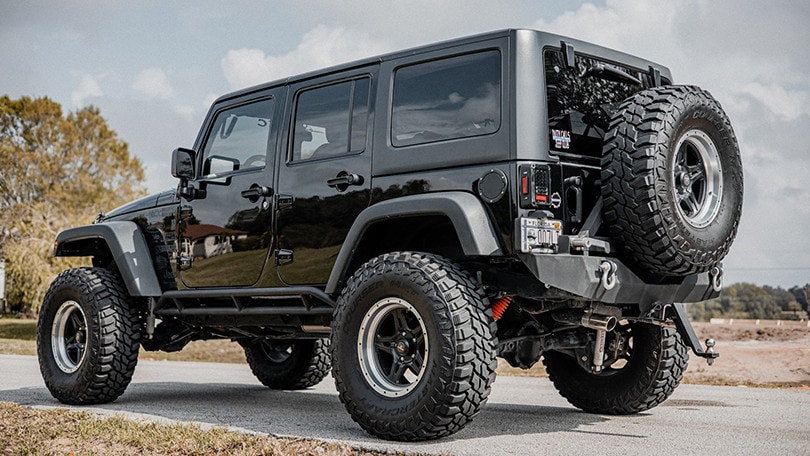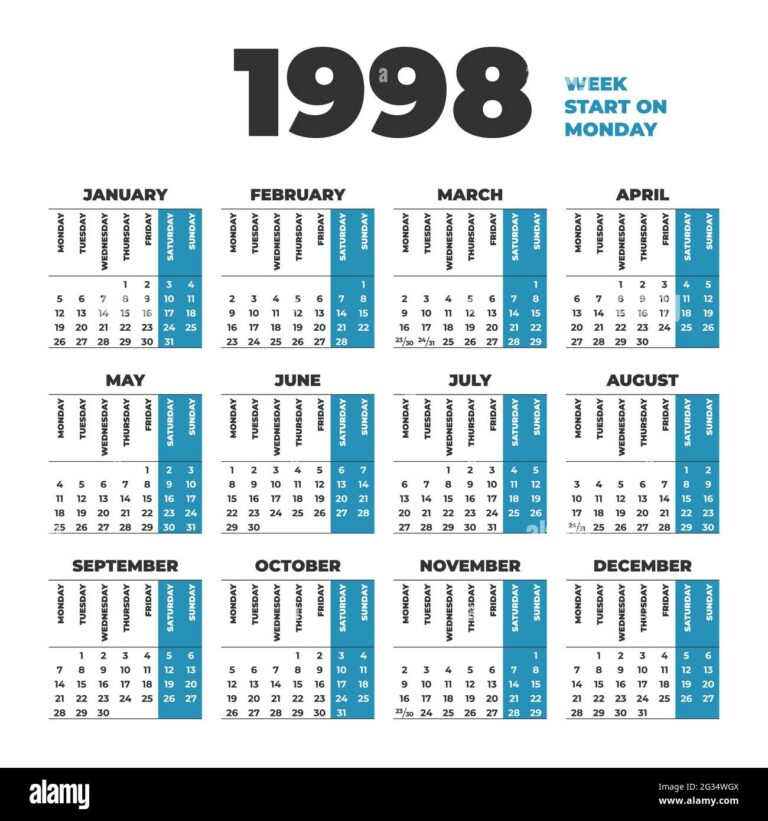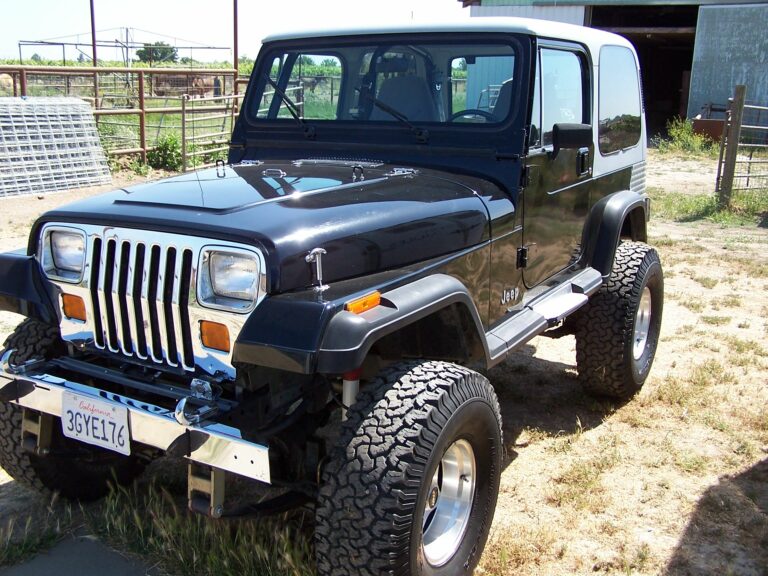How Much Does A Jeep Wrangler Unlimited Weigh? Unpacking the Numbers Behind the Icon
How Much Does A Jeep Wrangler Unlimited Weigh? Unpacking the Numbers Behind the Icon jeeps.truckstrend.com
The Jeep Wrangler Unlimited stands as an undisputed icon of adventure, freedom, and off-road prowess. Its distinctive silhouette, removable doors, and open-air capabilities beckon enthusiasts to explore trails less traveled. Yet, beneath its rugged charm and impressive capabilities lies a fundamental characteristic that significantly impacts everything from fuel economy and performance to payload and towing capacity: its weight.
Understanding "How Much Does A Jeep Wrangler Unlimited Weigh" is far more nuanced than simply quoting a single number. It’s a critical piece of information for current owners, prospective buyers, and anyone planning modifications or towing. The weight of your Wrangler Unlimited directly influences its driving dynamics, the type of tires and suspension you need, and even legal compliance. Let’s delve into the various factors that determine the true mass of this legendary vehicle and why those figures matter.
How Much Does A Jeep Wrangler Unlimited Weigh? Unpacking the Numbers Behind the Icon
Decoding Wrangler Weight: Curb Weight vs. Gross Vehicle Weight Rating (GVWR)
To truly understand the weight of a Jeep Wrangler Unlimited, it’s essential to differentiate between two primary metrics:
-
Curb Weight: This is the weight of the vehicle as it rolls off the assembly line, including a full tank of fuel and all standard equipment, but without passengers, cargo, or aftermarket accessories. It represents the vehicle’s inherent mass. Curb weight varies significantly based on the Wrangler Unlimited’s specific trim level, engine, transmission, and installed options.

Gross Vehicle Weight Rating (GVWR): This is the maximum permissible total weight of the fully loaded vehicle, including the vehicle itself (curb weight), all passengers, cargo, and any added accessories. Exceeding the GVWR can compromise safety, handling, braking, and may even void your warranty. The difference between the GVWR and the curb weight is your payload capacity – how much additional weight (passengers, gear, modifications) your Wrangler can safely carry.
Both curb weight and GVWR are vital figures. Curb weight gives you a baseline, while GVWR tells you your maximum operational limit, informing decisions about what you can safely carry or tow.

Factors That Heavily Influence Your Wrangler Unlimited’s Weight
The Jeep Wrangler Unlimited is not a one-size-fits-all vehicle, and neither is its weight. Several key factors contribute to its final mass:
-
Trim Level:

- Sport/Sport S: These are typically the lightest Unlimited models, equipped with essential features and fewer heavy-duty components.
- Sahara: Adding more creature comforts, larger wheels, and sometimes more robust body components slightly increases its weight over the Sport.
- Rubicon: Designed for extreme off-roading, the Rubicon trim comes with heavier-duty axles, larger tires, rock sliders, and often beefier suspension components, making it notably heavier than the Sport or Sahara.
- High Altitude/Mojave: These specialized trims also come with unique features and components that can add to their overall weight.
-
Engine Type:
- 3.6L Pentastar V6: This tried-and-true engine is a common choice and contributes a standard amount of weight.
- 2.0L Turbo I4: While smaller in displacement, the turbocharger and associated plumbing can mean its weight is comparable or even slightly heavier than the V6 in some configurations.
- 6.4L HEMI V8 (Rubicon 392): The powerful V8 engine is significantly heavier than the V6 or 2.0L, demanding a more robust drivetrain and chassis, which further increases the overall curb weight.
- 2.0L Turbo 4xe Plug-in Hybrid: This is the heaviest powertrain option. The large battery pack, electric motors, and associated hybrid components add hundreds of pounds to the vehicle’s curb weight, pushing it well over 5,000 lbs.
-
Transmission: While less impactful than engine choice, an automatic transmission generally weighs slightly more than a manual transmission.
-
Roof Type:
- Soft Top: This is the lightest roof option, offering maximum open-air flexibility.
- Hard Top (Freedom Top): The multi-piece hardtop is considerably heavier than the soft top, adding around 100-200 lbs depending on the specific model and material.
-
Optional Equipment and Aftermarket Modifications:
- Steel Bumpers & Winches: Replacing factory plastic bumpers with heavy steel units and adding a winch can easily add 100-200+ lbs to the front of the vehicle.
- Larger Tires & Wheels: Upgrading to heavier, larger off-road tires and beadlock wheels can add significant unsprung weight, impacting handling and suspension.
- Roof Racks & Roof-Top Tents: These additions place considerable weight high up on the vehicle, affecting the center of gravity and overall stability.
- Rock Sliders, Skid Plates, Lift Kits, Interior Storage Systems: All these common modifications contribute to the overall weight creep.
Why Does Your Wrangler Unlimited’s Weight Matter? Practical Implications
Understanding your Wrangler Unlimited’s weight is not just a technicality; it has tangible impacts on your ownership experience:
- Fuel Economy: Simply put, heavier vehicles require more energy to move. Every extra pound your Wrangler carries will marginally decrease your miles per gallon (MPG).
- Off-Road Performance: While weight can sometimes aid traction on certain obstacles, excessive weight can hinder articulation, increase the risk of getting stuck in soft terrain, and put more strain on driveline components. It can also lead to more body roll and a higher center of gravity, potentially compromising stability on uneven terrain.
- Towing Capacity: Your Wrangler’s ability to tow is directly tied to its GVWR and Gross Combined Weight Rating (GCWR – the maximum permissible weight of the fully loaded vehicle and its attached trailer). A heavier Wrangler means less available payload for cargo or passengers, and less remaining capacity for towing. Most Unlimited models can tow up to 3,500 lbs, but this is contingent on the vehicle’s actual loaded weight.
- Handling and Braking: Increased weight impacts a vehicle’s handling characteristics, making it feel less nimble and increasing stopping distances. Upgrading brakes might be necessary if significant weight is added through modifications.
- Payload Capacity: Knowing your payload capacity (GVWR minus curb weight) is crucial for safety. Overloading your Wrangler can lead to premature wear on tires, brakes, and suspension, and can create dangerous driving conditions.
- Tire Choice and Suspension Upgrades: Tires have load ratings that must be appropriate for the vehicle’s loaded weight. Similarly, if you add substantial weight (e.g., heavy bumpers, winches, roof racks), your factory suspension will likely sag and perform poorly. Aftermarket suspension upgrades designed for specific weight ranges become essential.
- Legal Compliance: Some roads, bridges, or even ferry services have weight restrictions. Understanding your vehicle’s weight ensures you stay within legal limits.
Managing Your Wrangler’s Weight: Tips and Considerations
For many Wrangler owners, adding modifications is part of the fun. However, it’s crucial to do so mindfully:
- Prioritize Needs vs. Wants: Before adding heavy accessories, consider if they are truly necessary for your adventures. Can you achieve your goals with lighter alternatives?
- Opt for Lightweight Materials: When possible, choose aluminum bumpers, synthetic winch ropes, and lighter alloy wheels over heavier steel counterparts.
- Regularly Assess Your Load: Don’t carry unnecessary gear day-to-day. Remove recovery gear, tools, or camping equipment when not needed.
- Plan for Suspension Upgrades: If you anticipate adding significant weight, factor in the cost and necessity of a corresponding suspension upgrade designed to handle the increased load. This ensures proper ride height, handling, and longevity of components.
- Monitor Tire Pressure: Heavier loads require higher tire pressures (within the tire’s maximum limits) to maintain optimal contact patch and prevent excessive sidewall flex.
- Distribute Weight Evenly: When loading cargo, try to distribute the weight as evenly as possible to maintain balance and stability. Keep heavier items low in the vehicle.
Jeep Wrangler Unlimited (JL Generation) Approximate Curb Weights and GVWRs
The following table provides approximate curb weights and Gross Vehicle Weight Ratings (GVWRs) for various Jeep Wrangler Unlimited (JL generation) models. Please note that exact figures can vary slightly based on specific options, model year, and minor manufacturing differences. Always refer to your vehicle’s door jamb sticker for precise GVWR and payload capacity.
| Model/Trim (4-Door Unlimited) | Engine | Transmission | Approximate Curb Weight (lbs) | Approximate GVWR (lbs) | Approximate Payload Capacity (lbs) |
|---|---|---|---|---|---|
| Sport S | 3.6L Pentastar V6 | Automatic | 4,167 | 5,500 | 1,333 |
| Sahara | 3.6L Pentastar V6 | Automatic | 4,263 | 5,500 | 1,237 |
| Rubicon | 3.6L Pentastar V6 | Automatic | 4,449 | 5,800 | 1,351 |
| Sahara 4xe | 2.0L Turbo PHEV | Automatic | 5,225 | 6,100 | 875 |
| Rubicon 4xe | 2.0L Turbo PHEV | Automatic | 5,268 | 6,100 | 832 |
| Rubicon 392 | 6.4L HEMI V8 | Automatic | 5,103 | 6,000 | 897 |
Note: Payload capacity is an approximation based on GVWR – Curb Weight. Actual payload can vary based on factory options and specific vehicle configuration.
Conclusion: Weight as a Pillar of Wrangler Performance
The question of "How Much Does A Jeep Wrangler Unlimited Weigh" is foundational to understanding its capabilities and limitations. From the base Sport S to the powerful Rubicon 392 and the innovative 4xe hybrid, the weight of a Wrangler Unlimited is a dynamic figure influenced by its engineering, features, and owner modifications.
Armed with knowledge about curb weight, GVWR, and the factors that influence them, you can make informed decisions that ensure your Wrangler remains safe, performs optimally, and continues to deliver the unparalleled off-road adventures it’s famous for. Always consult your owner’s manual and the vehicle’s placards for the most accurate and specific weight ratings for your individual Jeep Wrangler Unlimited. Knowing its weight is the first step towards truly mastering your off-road machine.
Frequently Asked Questions (FAQ) About Jeep Wrangler Unlimited Weight
Q1: What is the lightest Jeep Wrangler Unlimited model?
A1: Generally, the Jeep Wrangler Unlimited Sport S with the 3.6L V6 engine and a soft top will be the lightest configuration due to fewer heavy-duty components and luxury features.
Q2: How much heavier is the Wrangler 4xe compared to a gas-powered Unlimited?
A2: The Wrangler 4xe models (Sahara 4xe, Rubicon 4xe) are significantly heavier due to their battery pack and electric motors. They typically weigh about 800-1,000 pounds more than comparable gas-only models. For example, a Rubicon 4xe is over 800 lbs heavier than a Rubicon with the 3.6L V6.
Q3: Does adding a hard top make a big difference in weight?
A3: Yes, a factory hard top (Freedom Top) can add approximately 100-200 pounds compared to a soft top, depending on the specific model and materials.
Q4: How can I find the exact weight and payload capacity of my specific Wrangler Unlimited?
A4: The most accurate information for your specific vehicle is found on the sticker located on the driver’s side door jamb (usually labeled "Tire and Loading Information" or similar). This sticker will list your vehicle’s Gross Vehicle Weight Rating (GVWR) and often the maximum payload capacity. Your owner’s manual also contains detailed weight specifications.
Q5: How much weight can I add to my Wrangler Unlimited with aftermarket modifications?
A5: The amount of weight you can safely add is determined by your vehicle’s payload capacity (GVWR minus curb weight). For example, if your Wrangler has a 1,000 lb payload capacity, and you weigh 200 lbs, you can add up to 800 lbs of modifications, passengers, and cargo. It’s crucial to factor in the weight of yourself and any passengers when calculating available payload for mods. Exceeding this limit can compromise safety and vehicle longevity.




